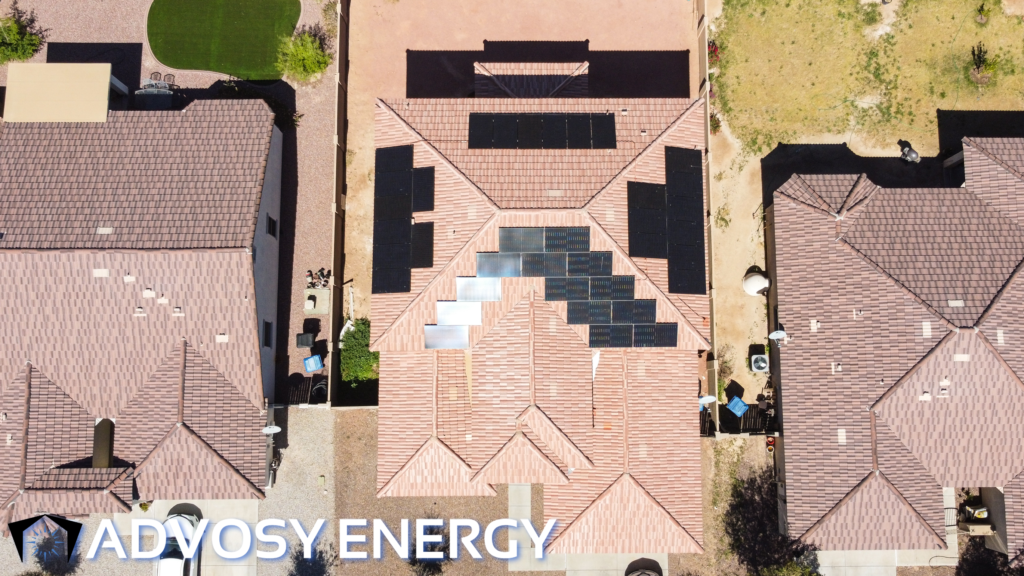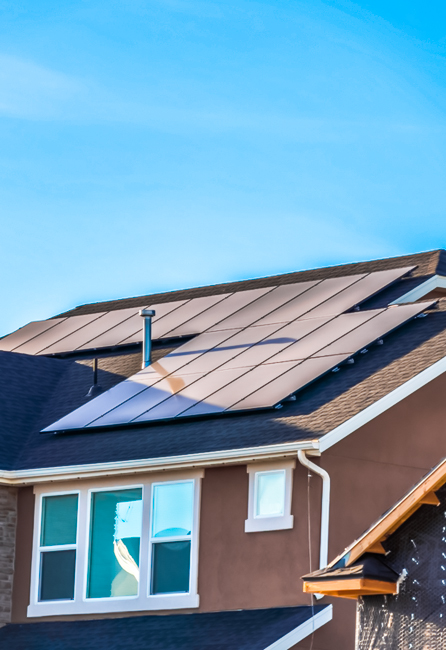Solar roofing systems have become increasingly popular due to their cost-efficient and eco-friendly energy solutions. In Phoenix, Arizona, solar roofing systems can be especially beneficial given the abundance of sunny days in the area throughout the year. However, it is essential to ensure that these systems are properly maintained to maximize their lifespan.
Daily maintenance is an important component of ensuring that a solar roofing system remains operational for many years. Regularly inspecting all components including wiring, panels, mountings, batteries and inverters allow any potential issues to be identified before they cause more significant damage or reduce efficiency.
Additionally, cleaning off debris from the surface of the panels should be done regularly to keep them working optimally. Furthermore, proper storage of spare parts will also help maintain optimal performance over time.
1. Inspecting The Solar System
In the desert climate of Phoenix, AZ, solar energy is an attractive option for homeowners looking to reduce their reliance on traditional electricity sources.
To ensure that these rooftop systems are able to perform optimally and last as long as possible, there are several important steps that should be taken when installing and maintaining them.
Monitoring temperatures is essential in this environment since extreme heat can cause thermal expansion and contraction which can weaken connections over time.
Additionally, it’s important to prevent corrosion by making sure all metal components have adequate protection from water and moisture exposure.
Regular inspections should also be carried out to identify any potential issues early, so they can be addressed before causing serious damage or failure of your system.
2. Cleaning The Solar Panels

Maintaining a solar roofing system in Phoenix, AZ requires dedicated cleaning. This not only improves the efficacy of the system, but also helps to extend its lifespan.
Cleaning should be done on a regular basis and with specialized tools or materials that are designed for use on photovoltaic surfaces. It is important to avoid harsh chemicals, abrasives, and other contaminants during the cleaning process as they can cause damage to sensitive components over time.
In addition to regularly scheduled cleanings, it is essential to keep an eye out for debris such as leaves and twigs that may accumulate around the panels. This type of debris can block light from reaching the cells and impede their performance if left unchecked.
Working with a knowledgeable technician can help ensure all potential obstructions are identified and addressed quickly before any serious damage occurs.
3. Optimizing Panel Placement
Optimizing panel placement is a key step in maximizing the lifespan of your solar roofing system. It requires understanding local regulations, securing permits and hiring professionals who have experience with these types of installations.
When it comes to achieving an optimal outcome for your installation, there are several factors that need to be considered such as correct spacing between panels, angle of inclination relative to the sun’s position and any potential obstructions or shade from nearby buildings which can affect performance.
To ensure you get best results from your solar roofing system, it is important to secure all necessary permits before starting work and hire experienced professionals who can accurately assess the property for issues that may arise during installation. This will help guarantee a successful project that delivers maximum efficiency and longevity.
4. Utilizing Proper Storage Methods
When it comes to maximizing the lifespan of a solar roofing system in Phoenix, AZ, proper storage methods are essential.
It is important to ensure that all components are properly insulated and weatherproofed against any type of adverse condition.
All electrical wiring should be appropriately sealed from water damage and exposed wires should not be touching one another or direct sunlight for an extended period of time.
Additionally, during periods when the sun will directly hit certain parts of the roof such as midday or at noon, shading the area can help protect those sections from excess heat exposure.
Properly maintaining these systems also involves regularly checking on any potential damages due to wear and tear which might have occurred over time.
This includes inspecting loose screws, bolts, nuts and other fastenings used in assembly.
In addition to this regular maintenance process, it would also be beneficial to inspect seals around joints between different materials used in construction as well as check if there are any signs of cracks or distortions caused by rusting or corrosion.
Taking into account these steps helps maintain your solar roofing system’s overall stability while extending its life expectancy even further within Phoenix’s climate.
5. Updating Software And Firmware

The installation of a solar roofing system in Phoenix AZ requires that the owner monitor and maintain its software and firmware.
To ensure maximum lifespan, monitoring software should be installed to track performance, detect malfunctions or errors, and alert owners before any major issues arise.
Automated upgrades can also help extend your solar roof’s life; these upgrades allow for quick adaptation when new features are released or when current features need improvement.
Software updates can come with certain risks if not handled properly; however, having an experienced technician on hand who is familiar with both the hardware and software of your rooftop solar system will minimize those risks.
By taking proactive steps such as regularly monitoring and upgrading your software and firmware, you will maximize the longevity of your investment while minimizing potential risks associated with outdated systems.
6. Replacing Damaged Parts
The longevity of a solar roofing system in Phoenix, AZ depends on the regular maintenance and efficient operation of its components. To ensure that each part is functioning optimally, it is important to monitor temperature and reduce vibration as much as possible.
This can be done by regularly inspecting the panels and inverters for signs of wear or damage. If parts are damaged, they should be replaced immediately to prevent further damage from occurring over time.
It is also essential to use high-quality materials when replacing any damaged parts, such as those designed specifically for solar systems. These products will help protect the solar roofing system against extreme temperatures and other environmental conditions.
Additionally, installing mounting brackets with weatherproof seals can increase overall system performance and durability by preventing water infiltration into vulnerable areas. Taking these steps now can save costly repairs down the line resulting from premature failure due to inadequate protection.
7. Regularly Reviewing Performance Data
Having identified and replaced any components that may be damaged, it is necessary to regularly review the performance data of your solar roofing system in order to maximize its lifespan.
Monitoring usage and analyzing trends will help you identify problems before they become too severe. When reviewing the data, look for evidence of over-usage or under-usage beyond normal levels, as this could indicate a need for corrective action.
You should also check if there are any discrepancies between energy production estimates from the manufacturer and actual results from your system. Checking on a regular basis can help you stay up to date with maintenance needs and detect any issues early enough so that they do not cause serious damage or require costly repairs.
Additionally, such reviews give insight into how efficiently the system has been operating, which helps adjust settings accordingly for optimal output.

